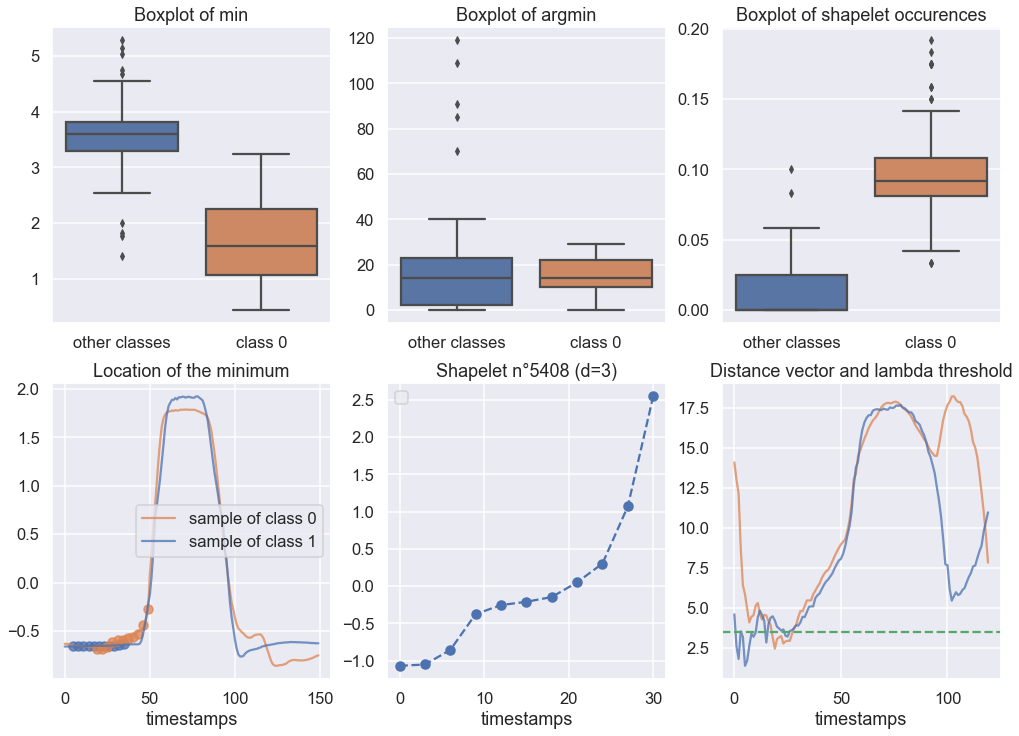Random Dilated Shapelet Transform: A New Approach for Time Series Shapelets
Shapelet-based algorithms are widely used for time series classification because of their ease of interpretation, but they are currently outperformed by recent state-of-the-art approaches. We present a new formulation of time series shapelets including the notion of dilation, and we introduce a new shapelet feature to enhance their discriminative power for classification. Experiments performed on 112 datasets show that our method improves on the state-of-the-art shapelet algorithm, and achieves comparable accuracy to recent state-of-the-art approaches, without sacrificing neither scalability, nor interpretability.
PDF AbstractCode
| Task | Dataset | Model | Metric Name | Metric Value | Global Rank | Benchmark |
|---|---|---|---|---|---|---|
| Time Series Classification | ACSF1 | R_DST_Ensemble | Accuracy(30-fold) | 0.8433333333333333 | # 1 | |
| Time Series Classification | Adiac | R_DST_Ensemble | Accuracy(30-fold) | 0.80230179028133 | # 1 | |
| Time Series Classification | ArrowHead | R_DST_Ensemble | Accuracy(30-fold) | 0.8912380952380949 | # 1 | |
| Time Series Classification | Beef | R_DST_Ensemble | Accuracy(30-fold) | 0.7511111111111111 | # 1 | |
| Time Series Classification | Earthquakes | R_DST_Ensemble | Accuracy(30-fold) | 0.7390887290167865 | # 1 | |
| Time Series Classification | ECG200 | R_DST_Ensemble | Accuracy(30-fold) | 0.9016666666666667 | # 1 | |
| Time Series Classification | ECG5000 | R_DST_Ensemble | Accuracy(30-fold) | 0.9467629629629628 | # 1 | |
| Time Series Classification | Wafer | R_DST_Ensemble | Accuracy | 0.9999513303049968 | # 1 | |
| Accuracy(30-fold) | 0.9999513303049968 | # 1 |












